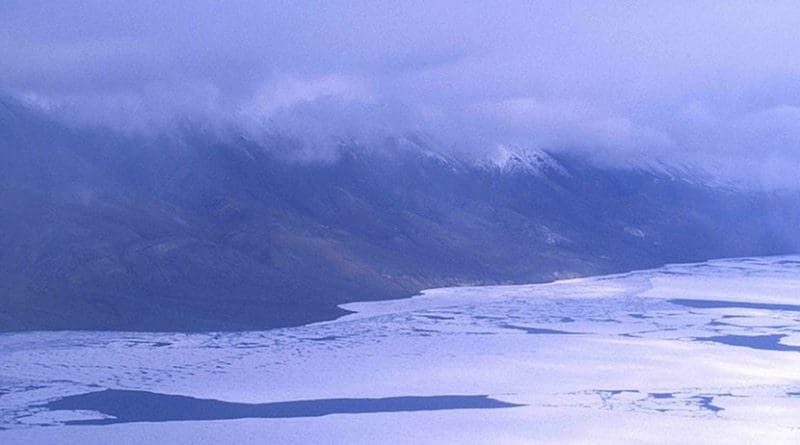1C Rise In Atmospheric Temperature Causes Rapid Changes To World’s Largest High Arctic Lake
An interdisciplinary team of scientists examining everything from glaciology to freshwater ecology discovered drastic changes over the past decade to the world’s largest High Arctic lake. And from glacial melt to the declining lake ice to changes in lake ecology, the results from Lake Hazen on Ellesmere Island in Canada are alarming.
While it may sound modest, scientists have documented a temperature increase of just one degree over a series of warm summers, which has set off a chain of events disrupting the entire ecology of the lake. This increase of just one degree in atmospheric temperature led to increased solar radiation. The increased solar radiation has led to a significant increase in snowpack temperature, which in turn led to a whole series of shifts in the lake system.
“The amount of glacial meltwater going into the lake has dramatically increased,” said Martin Sharp, glaciologist and University of Alberta professor. “Because it’s glacial meltwater, the amount of fine sediment going into the lake has dramatically increased as well. That in turn affects how much light can get into the water column, which may affect biological productivity in the lake, and it also increases the rate of mineral sediment deposition on the lake bottom.”
The domino effect of changes resulted in not only algal blooms and detrimental changes to the Arctic Char fish population, but also points to a near certain future of summer ice-free conditions.
Untold impact
“Lake ice is important, because it prevents light from getting in to the lake, which phytoplankton need to photosynthesize,” said Kyra St. Pierre, a co-author and Vanier Scholar PhD student at the University of Alberta. “So if we have less lake ice or longer ice-free periods, more light enters the lake, which could actually increase productivity for the lake, a dramatically different scenario from what we’ve seen in the past.”
The findings document an unprecedented shift versus the previous three centuries, not only painting a bleak picture for the future of the of the lake and its catchment, but also challenge scientists’ expectations of how such a large system could respond so rapidly to a one-degree rise.
“We originally hypothesized that, because of its large volume, Lake Hazen would be relatively resilient to the impacts of Arctic warming,” said lead author Igor Lehnherr, assistant professor in the Department of Geography at the University of Toronto-Mississauga and UAlberta alumnus. “The finding that this was not the case is alarming, because the Arctic is the most rapidly warming region on the planet, with conservative estimates predicting further warming of another approximately 4oC by the end of the century.”
St. Pierre further added that, while scientists would expect smaller systems to respond rapidly to temperature shifts, it was been anticipated that larger systems, like Lake Hazen, would change more slowly. “But Lake Hazen is pretty much as big as you can get in this kind of environment, and it’s already showing that there are changes across the entire ecosystem in less than a decade. And this is only a third of what the conservative scenarios are for future warming,” said St. Pierre.
Big-picture perspective
St. Pierre noted that the scientific exploration of Lake Hazen speaks to the big-picture perspective, approaching the questions of climate change from a focus on the whole system rather than examining subsystems in silos.
According to Sharp, the focus of the findings also marks an important milestone from the perspective of glaciology, which traditionally focuses on sea level as the most direct consequence of the impact of climate change on glaciers.
“If you look at the glacier literature on climate change, it’s mostly focused on sea level as the number one outcome. What this finding about Lake Hazen is telling us is that there can also be pretty substantial impacts in terrestrial aquatic ecosystems that are directly connected to the glaciers. So there are other things we need to think about from a climate impacts perspective,” said Sharp.
So are these dramatic changes in the High Arctic’s largest lake a sign of things to come? Sharp and St. Pierre say it’s too soon to tell, though given the rapid changes in the past decade, the scientific team is keeping a close eye on the entire ecosystem. “We are interested in how this plays out going forward, whether this is a short-term disturbance for which there could be some recovery if the atmospheric temperature cools again, or whether this is the start of something much bigger. That’s the interesting question,” said Sharp.
“The world’s largest High Arctic lake responds rapidly to climate warming,” was published in the March 29 issue of Nature Communications.

